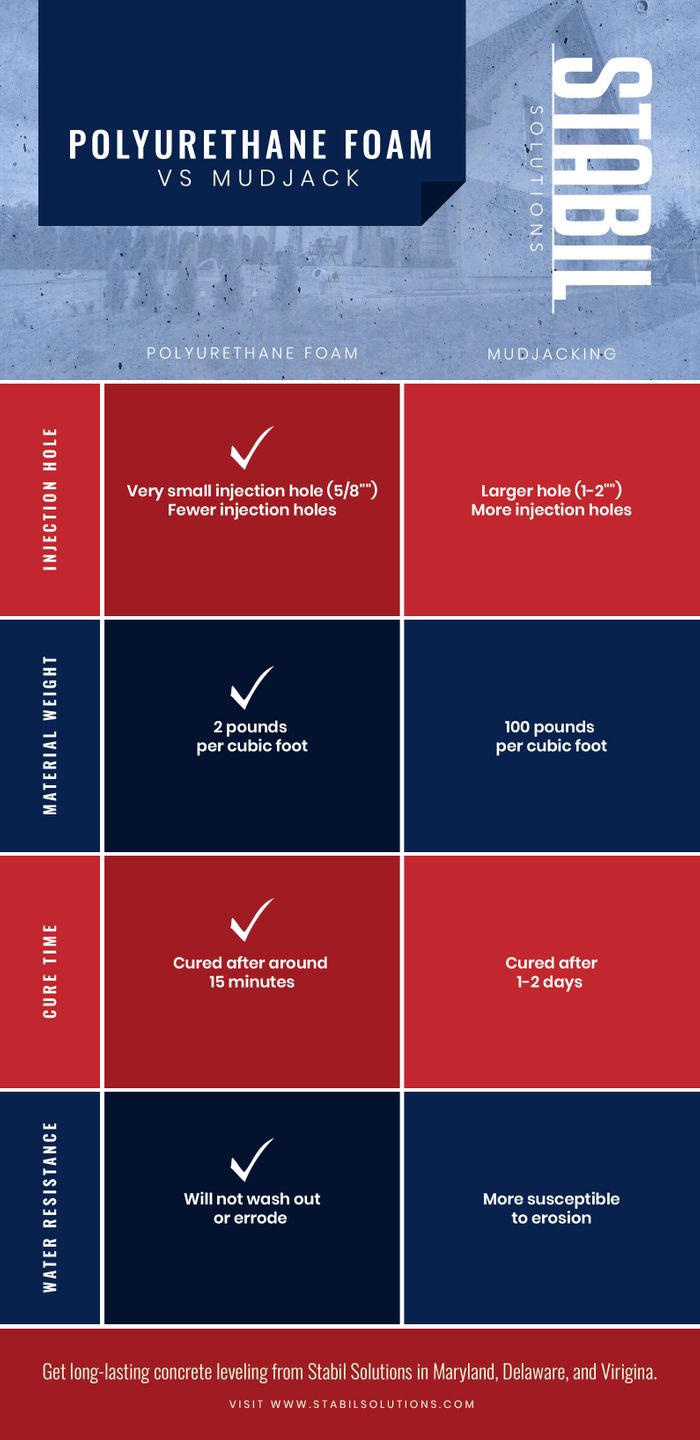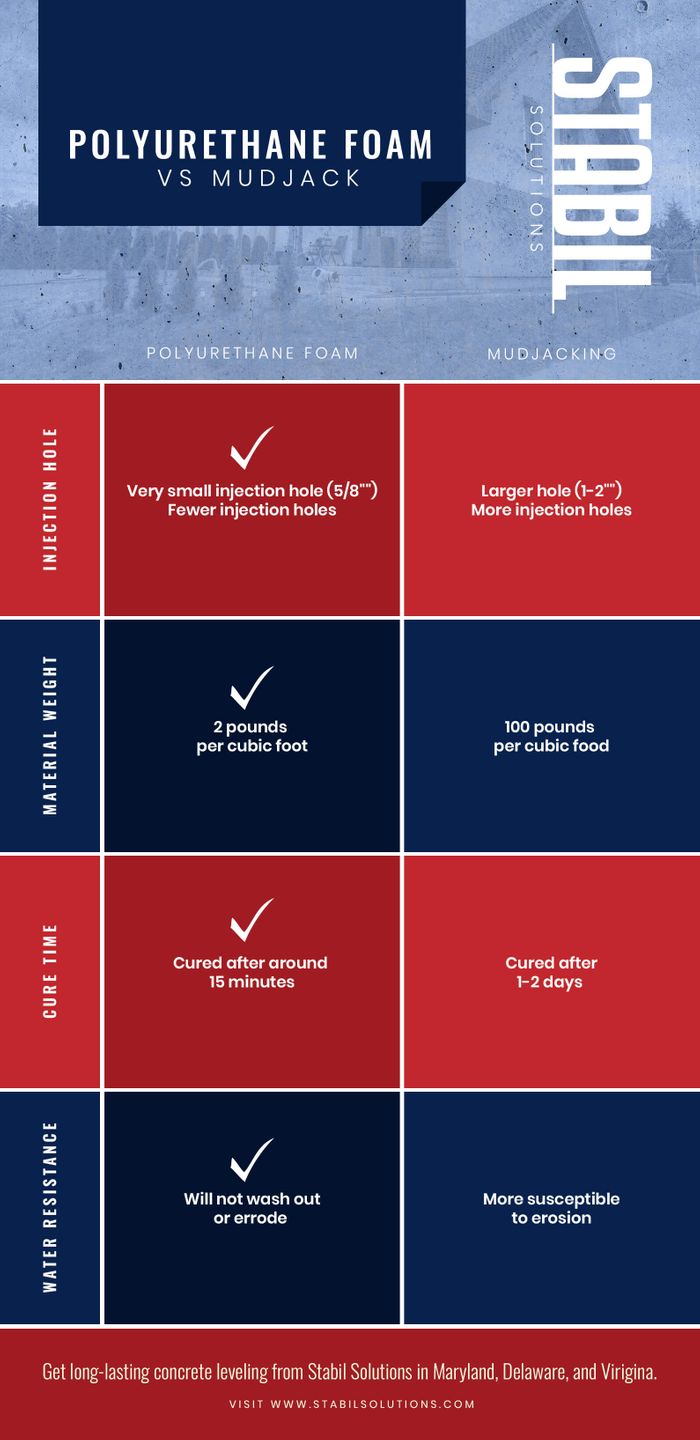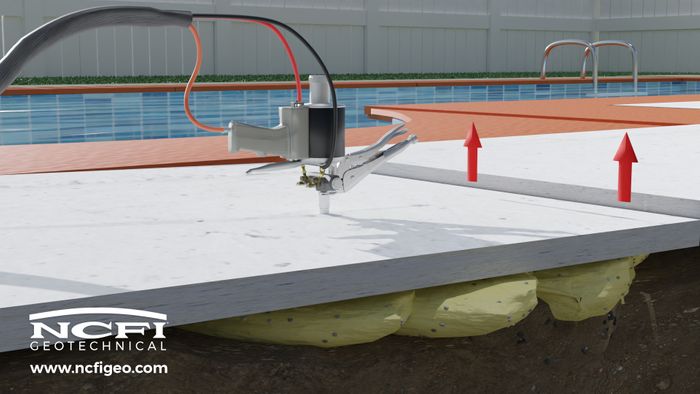Mudjacking Vs Polyurethane Foam For Concrete Lifting In Maryland, Delaware, and Pennsylvania
Sunken, settled, and uneven concrete slabs happen all the time across Maryland, Delaware, and Pennsylvania. For property owners seeking a less expensive alternative to costly re-grading or concrete replacement, mudjacking and polyurethane foam are two common concrete leveling methods.
Is one concrete leveling method better than the other? Let’s compare mudjacking vs. using polyurethane foam for concrete lifting, and if you’re looking for a concrete leveling solution, contact Stabil Solutions today.

How Long Does Concrete Leveling Last?
Concrete leveling, whether you choose mudjacking or polyurethane leveling, is typically cheaper than concrete replacement. This may make you feel wary about whether it's a permanent fix or if you'll just need to relevel the concrete again in a few years.
Polyurethane lifting is actually more durable than normal soil, while mudjacking is replacing the soil with more soil. By choosing foam, you reduce the risk of having to do more work in a few years. In most cases, homeowners report that their mudjacking repair lasts around 2-5 years, but polyurethane can last much longer if properly maintained. The longevity of any concrete lifting repair can vary based on several different factors:
The amount and type of stress on the concrete
How long it's been since the concrete has been poured
Soil type and structure
Weather conditions (freezing and thawing)
The only way to ensure that your leveling is done right and lasts for a long time is to choose a quality company that guarantees its work, such as Sabil Solutions.
Contact Our Team For Concrete Lifting Solutions
Looking for long-lasting concrete leveling solutions utilizing high-tech polyurethane foam? Our team has the training and expertise to get the job done right and we offer a 3-year warranty on concrete lifting services. Contact us today in Maryland, Delaware, or Pennsylvania to get started.


